The Pug Life Span: Unveiling the Secrets to Your Pug’s Longevity
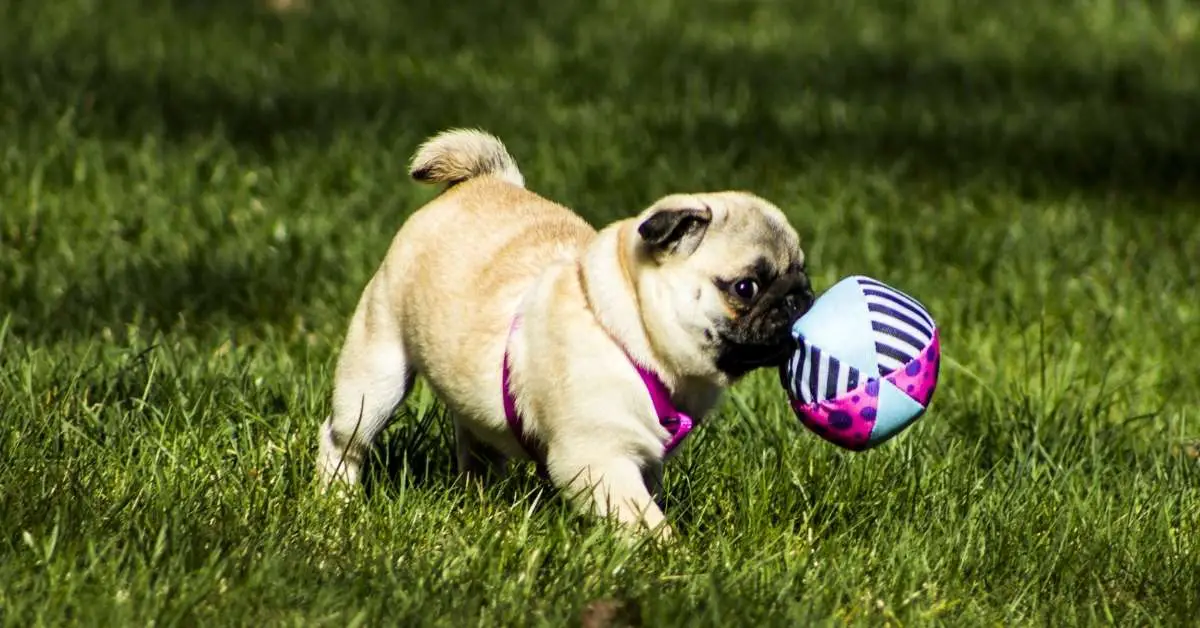
Pug Life Span, a topic close to every pug lover’s heart, delves into the intriguing and often delightful world of these charming canine companions. From their puppyhood antics to the silver muzzle days, understanding the various stages of a pug’s life is crucial for ensuring their well-being and happiness.
In this article, we unravel the mysteries of Pug Lifespan in detail.
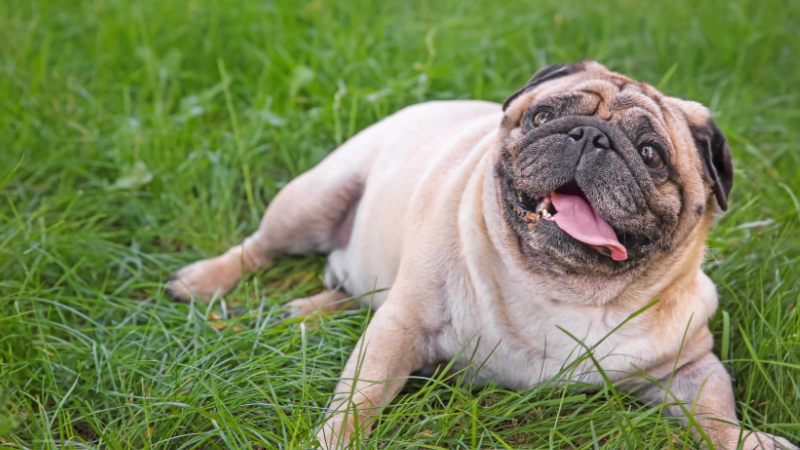
Key Notes
- Unraveling the Pug Lifespan: From Pug Puppy to Adult Healthy Dog.
- Discover the Secrets to Prolonging Your Pug Lifespan: Ensuring Care and Fostering Well-being of Pug Breed!
- From Myths to Mastery: Nurturing Your Pug Lifespan with Expert Advice and Practical Tips!
Defining the Pug Breed: More Than Just a Cute Face
Pugs, with their distinctive wrinkled faces and curled tails, belong to a breed known for its affable nature. Originating from China, these dogs were revered companions of royalty.
Today, they’ve won the hearts of millions worldwide, becoming popular pets cherished for their playful demeanor and loyalty.
Unraveling Pug Life Expectancy: Factors at Play
On average, a pug’s lifespan ranges from 12 to 15 years, making them comparable to other small dog breeds. However, each pug is unique, and their longevity is influenced by various elements, making their life expectancy a blend of nature and nurture.
Several factors play a vital role in determining the life span of a pug dogs. These include:
Genetics
Genetics is a cornerstone in understanding a pug’s longevity. The genes passed down from their parents significantly impact their overall health and susceptibility to hereditary conditions. Responsible breeding practices, which focus on eliminating hereditary health problems (such as pug dog encephalitis), can increase a pug puppy life expectancy.

Nutrition
Proper nutrition and a healthy diet are essential for any dog breed, including male and female pugs. A balanced diet that meets their specific dietary requirements at each life stage ensures they have the energy and nutrients they need to thrive. Poor nutrition can lead to health issues that may shorten their life span.
Exercise
Regular Exercise is not only vital for maintaining a healthy weight but also for keeping a pug mentally and physically engaged. Overweight pugs are more prone to health problems, which can affect their life span.
Healthcare
Regular vet check-ups and preventive care, including vaccinations and parasite control, are crucial in maintaining a pug’s health. Timely detection and treatment of health issues can significantly impact their life expectancy.
Environmental Factors
The living environment plays a crucial role in a pug’s life span. A safe, clean, and stimulating environment can contribute to their well-being, while exposure to toxins or hazards can lead to health problems.
Socialization and Mental Stimulation:
Pugs are social dogs, and their mental well-being depends on interaction and stimulation. A lack of socialization and mental engagement by dog owners/pug owners can lead to behavioral problems and potentially reduce their life expectancy.
So, as good pug owners, you must provide proper mental stimulation to ensure that your pugs live long and healthy lives.
Tip: Pet insurance also helps dog owners in terms of financial aid, which is critical for any senior dog in advanced age.

Average Life Span Comparison to Other Dog Breeds
Pugs, especially purebred dogs, typically have an average life expectancy of 12 to 15 years (as per Pug Dog Club). This places them in the same life expectancy range as other small dog breeds.
However, it’s important to remember that every dog is unique, and some pugs may live shorter or longer lives depending on the factors mentioned earlier.
In comparison to larger breeds, pugs tend to have a longer life span. Larger dogs tend to age faster, and their life expectancy is often shorter. Smaller breeds like pugs generally have a slower metabolic rate, which can contribute to their extended life span.
Here, you can study the influence of telomere length on the life span of dog breeds.
The Role of Genetics and Health Issues
The role of genetics in a pug’s life expectancy cannot be overstated. While pugs are lovable and charming, they are also prone to certain hereditary health issues. These can include pug dog encephalitis and the following:
Brachycephalic Syndrome
Pugs are a brachycephalic breed, which means they have short noses and flat faces. While this gives them their adorable appearance, it can also lead to breathing difficulties and overheating, which may affect their overall health and life span.
Hip Dysplasia
Hip dysplasia is a common issue in many dog breeds, including pugs. It is a hereditary condition where the hip joint doesn’t develop properly, leading to pain and mobility issues as the dog ages.
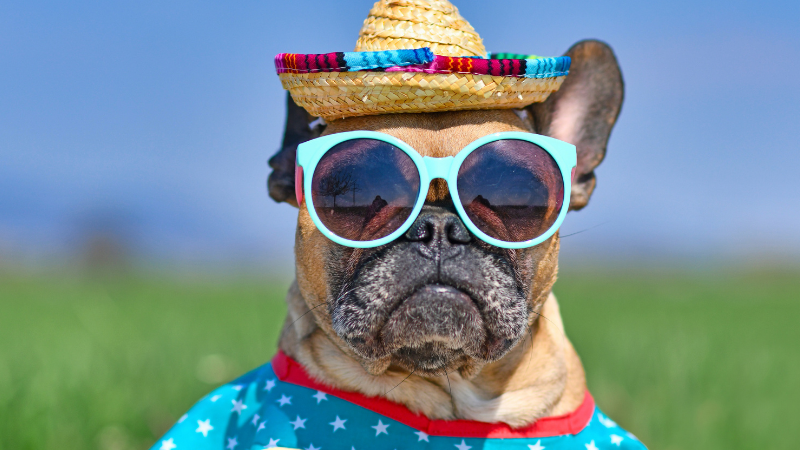
Eye Conditions
Pugs are prone to several eye conditions and neurological disorders, such as corneal ulcers, dry eye, and progressive retinal atrophy. Regular eye exams and prompt treatment are essential in managing these conditions.
Obesity
Pugs have a tendency to gain weight easily, which can lead to obesity. Obesity is linked to a range of health problems, including heart disease and diabetes, which can reduce their life span.
While genetics may predispose pugs to some health issues (that usually affect pug’s nervous system), responsible breeding practices can help reduce the risk of hereditary conditions. This emphasizes the importance of choosing a reputable breeder who conducts health screenings on their breeding dogs.
Here, you can study more about pug diseases and predispositions so that you are well aware of your pug healthy state.
The Pug Puppy Chronicles: Nurturing the Early Years
Pug puppies, akin to curious toddlers, undergo significant growth and development milestones. Dog food, vaccinations, and healthcare are paramount during this phase. Ensuring a healthy start paves the way for a robust adulthood.
Adult Pugs: Navigating the Prime Years with Care
Adult pugs, in their prime, require tailored pug dog food and consistent Exercise to maintain their vitality. Understanding their physical and mental needs is essential for a balanced lifestyle. Regular vet check-ups, a balanced diet, and mental stimulation, contribute to a fulfilling adult life.
Pugs and Aging: Graceful Transitions and Tender Care
As pugs age, they may encounter typical signs of aging. Arthritis, vision impairment, and dental issues become common concerns. Providing comfort, patience, and high quality food and healthcare becomes paramount in ensuring their golden years are filled with love and ease.

Health Care: A Lifelong Commitment
Regular vet check-ups, preventive care, and addressing breed-specific health issues are crucial in maximizing a pug’s lifespan. Dental hygiene is often overlooked but plays a pivotal role in senior pugs’ overall well-being. A healthy pug is a happy pug.
Crafting an Ideal Environment: Where Pugs Thrive
Creating the perfect environment for your Pug is more than just providing a roof over your head. It’s about constructing a haven where they can flourish physically, mentally, and emotionally. Let’s delve into the intricacies of crafting an environment where pugs not only survive but thrive, encompassing safety, mental stimulation, social interactions, and overall well-being.
Safe and Stimulating Living Environment
Ensuring your home is a safe space for your Pug is paramount. Remove potential hazards like small objects they might swallow, toxic plants, and accessible electrical cords.
Invest in pug-friendly toys that encourage mental engagement and physical activity. Pugs are curious creatures, so creating a space where they can explore safely contributes to their happiness.
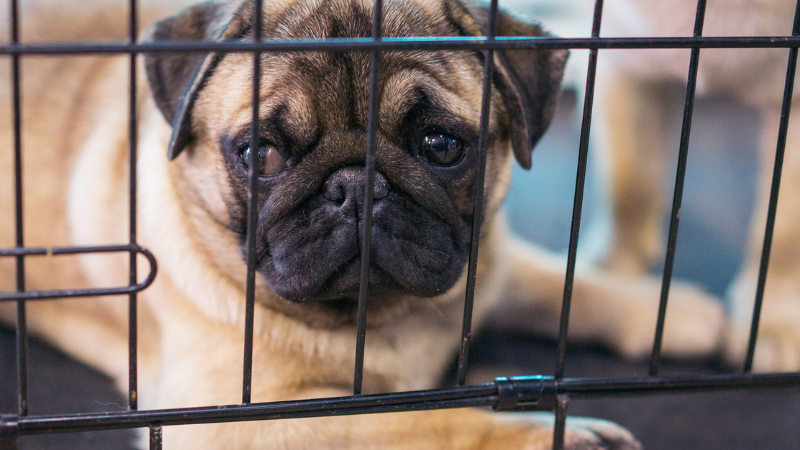
Balancing Work and Social Life for Your Pug
Pugs are social animals; they crave companionship. If you work long hours, consider a dog sitter, a trusted neighbor, or a local doggy daycare.
Loneliness can lead to anxiety and behavioral problems. Regular social interactions, even if it’s just a walk in the park, are essential. Additionally, leaving
Traveling with Your Pug and Ensuring Their Well-being
Traveling with your Pug can be enjoyable, but it requires planning. Invest in a comfortable, well-ventilated carrier for trips. Ensure they have access to water and regular bathroom breaks during journeys.
Familiarize them with car rides from a young age to minimize stress. When staying in new places, bring their favorite toys or blankets for a sense of familiarity. Consider their comfort and safety in every travel decision you make.
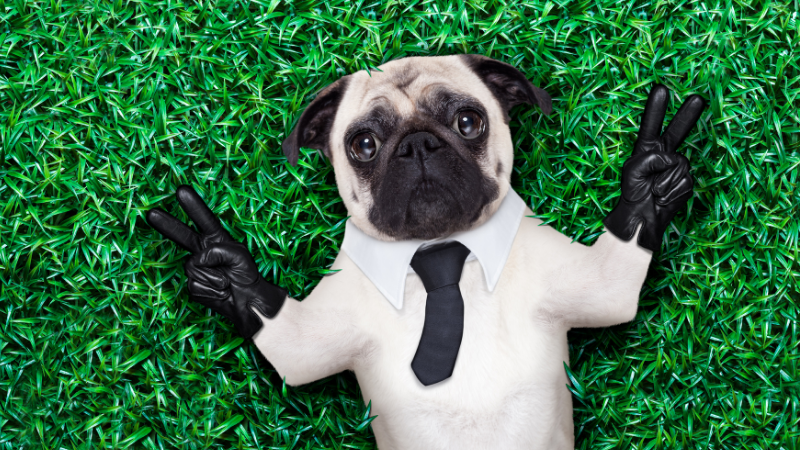
Pug Dog Life Span Myths Debunked: Separating Fact from Fiction
Pugs, with their adorable looks and endearing personalities, are often surrounded by myths and misconceptions regarding their life span. In this section, we’ll debunk common myths, helping you distinguish between fact and fiction to ensure you provide the best care for your pug companion.
1. Myth: Pugs Have a Very Short Life Span
Fact: While it’s true that some larger dog breeds tend to have shorter life spans, pugs generally live between 12 to 15 years. Proper care, including a balanced diet, regular exercise, and routine vet check-ups, can significantly contribute to their longevity.
2. Myth: Pugs Can’t Lead Active Lives
Fact: Pugs might have a reputation for being a bit lazy, but they do enjoy physical activities. While they may not excel in marathon runs, they appreciate short, regular walks and interactive playtime. Tailored exercise routines keep them healthy and agile.
3. Myth: Pugs Are Prone to Constant Health Problems
Fact: Pugs do have some breed-specific health concerns, such as respiratory issues due to their flat faces. However, not every Pug will suffer from these problems. Responsible breeding and regular vet check-ups can mitigate potential health issues, ensuring a healthier life for your Pug.
4. Myth: Pugs Don’t Need Exercise
Fact: Exercise is crucial for pugs. Regular physical activity helps maintain a healthy weight, strengthens their muscles, and keeps their joints in good condition. Lack of exercise can lead to obesity and related health problems, shortening their life span.
5. Myth: Pugs Can Eat Anything
Fact: Pugs have sensitive digestive systems. Feeding them a balanced diet specifically designed for their breed and size is vital. Human foods like chocolate, onions, and grapes can be toxic to them. A proper diet tailored to their needs enhances their overall health and vitality.

Frequently Asked Questions (FAQs)
How can I estimate my Pug’s life expectancy based on its lineage?
Understanding the health history of your Pug’s lineage can provide valuable insights. Reputable breeders often conduct health screenings on parent dogs, indicating a healthier genetic background. However, individual care, diet, and lifestyle choices also significantly influence a pug’s life span.
Are pugs prone to specific diseases that may affect their lifespan?
Yes, pugs have breed-specific health concerns, such as respiratory issues due to their flat faces, eye conditions, and obesity. Regular vet check-ups and responsible breeding practices can mitigate these risks, ensuring a longer and healthier life for your Pug.
What are some warning signs of potential health issues in pugs?
Watch for signs like excessive coughing, difficulty breathing, changes in appetite or water intake, sudden weight loss, lethargy, or changes in behavior. If you notice any of these, consult your vet promptly.
Can a pug’s life span be extended through proper care and lifestyle choices?
Absolutely. Proper nutrition, regular exercise, mental stimulation, and a safe, loving environment can significantly extend a pug’s life span. Responsible breeding practices, timely vet care, and attention to their specific needs can ensure a longer, healthier, and happier life for your pug companion.

Concluding Remarks: Celebrating Pug Life Span
Finally, understanding the nuances of a Pug’s life span empowers us to provide optimal care. By debunking myths and embracing the realities of their needs, we enhance their quality of life.
Remember, pugs are more than pets; they are cherished family members. Armed with knowledge and love, every wag of their tail becomes a celebration of the extraordinary bond we share.
Cheers to a future filled with shared joys, cuddles, and endless love, for in the world of pugs, every moment is a precious gift.
